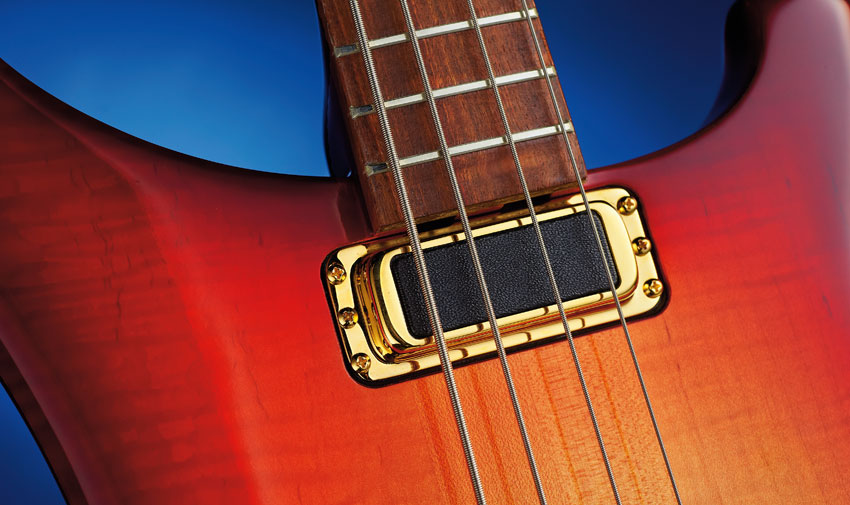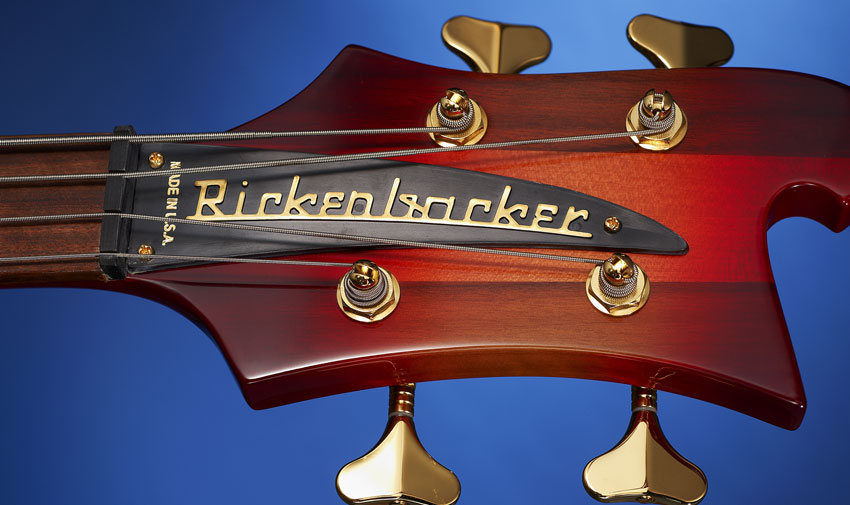MusicRadar Verdict
This not only looks good, it also sounds great! Do try one if you can - it could change your bass- playing life.
Pros
- +
Clean looks. Weight. The classic Rickenbacker sounds.
Cons
- -
As far as production-line basses are concerned, this is pricey and not always easy to find.
MusicRadar's got your back

Rickenbacker 4004CII Cheyenne Bass

Neck

Headstock

Body
The Cheyenne, at just shy of 20 years old, is actually one of the newer models in the Rickenbacker bass range. Here we look at its latest iteration, the 4004CII.
Compared with most American makers, Rickenbacker has never been one to constantly fill its catalogue with new models and upgrades, instead keeping to the tried, tested and much-loved instruments that bear its name.
However, the 4000C Cheyenne I Bass was introduced in 1994 to offer a more contemporary look and sound to its classic bass range, so it is a relatively new model. And while it retains much of the classic 4000 Series in shape and dimensions, it neatly avoids the heavy metalwork and fixtures associated with those earlier models.
"Well balanced and light in weight, the Cheyenne is an absolutely lovely instrument to play"
The 4000CII was introduced in 1999 as a revised version with a bubinga fingerboard, a maple and walnut body, and gold- plated hardware. Having no scratchplate, a pair of pickups, only two controls and a mini selector switch gives the Cheyenne a clean, uncluttered look, with the added benefit of gentle curving to the body edge.
It has a great neck profile and retains the classic headstock shape. Plus, with a close eye on future production, Rickenbacker now operates a policy of using American farm- grown sustainable woods for its instruments.
Well balanced and light in weight, the Cheyenne is an absolutely lovely instrument to play. It's comfortable, too, and without the restrictions of the classic hardware, this bass presents the ultimate in string access. But just how good does it sound without the presence of the classic large, old-style pickup?
Sounds
Actually, with a matched pair of Rickenbacker humbucking pickups and the minimum of controls (just volume, tone and three-way selector switch), the stage is neatly set for some really great blended sounds.
Want all the hottest music and gear news, reviews, deals, features and more, direct to your inbox? Sign up here.
"The setup on this review model is rather keen, with the strings set very low to fretboard - an important element in producing that legendary 'clanky' sound"
Individually, both pickups offer a warm element to the tone, but with such wide spacing on the body that they have their own sound characteristics, too. But it's the blending of the two that really brings out the full potential of this bass, with sweet spots aplenty for a very funky playing experience.
Far more importantly, as far as most players are concerned, is that the setup on this review model is rather keen, with the strings set very low to fretboard - an important element in producing that legendary 'clanky' sound. In fact, it's exceptionally good here, and much easier to attain than on the classic models, where pickup blending was hampered by the big difference in output levels from the two pickups.
It does sound clean, smooth and sonically sumptuous if you wish, but if you really dig in with aggression, this will bark and spit like an angry Rottweiler, and it's this dual personality that we really love. So, as far as great sounds are concerned, there are absolutely no complaints here - suffice to say, the Cheyenne II doesn't disappoint at all.
This is a great bass to play: comfortable, smooth and all with a sumptuous neck and fretboard, plus a fabulous sound that's clanky in all the right places. However, it does present a significant outlay of cash, and because Rickenbacker production runs are relatively short, finding one to try in a high street shop in the UK is not always an easy task. But we suggest it's worth the effort, because it is such a great- sounding bass, and one that retains the Rickenbacker heritage in every way.